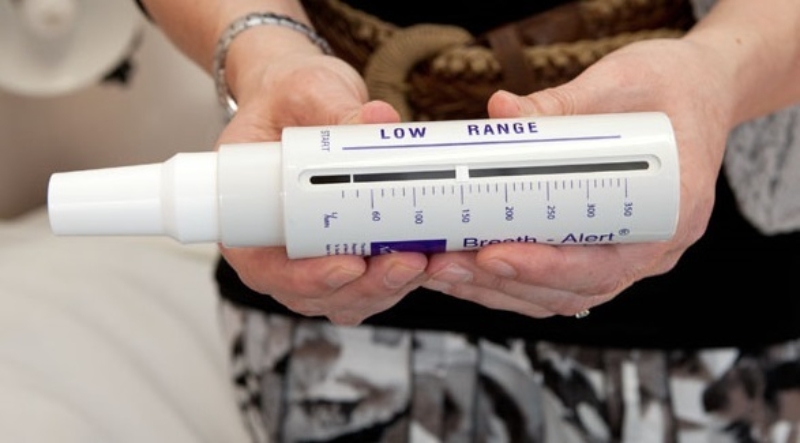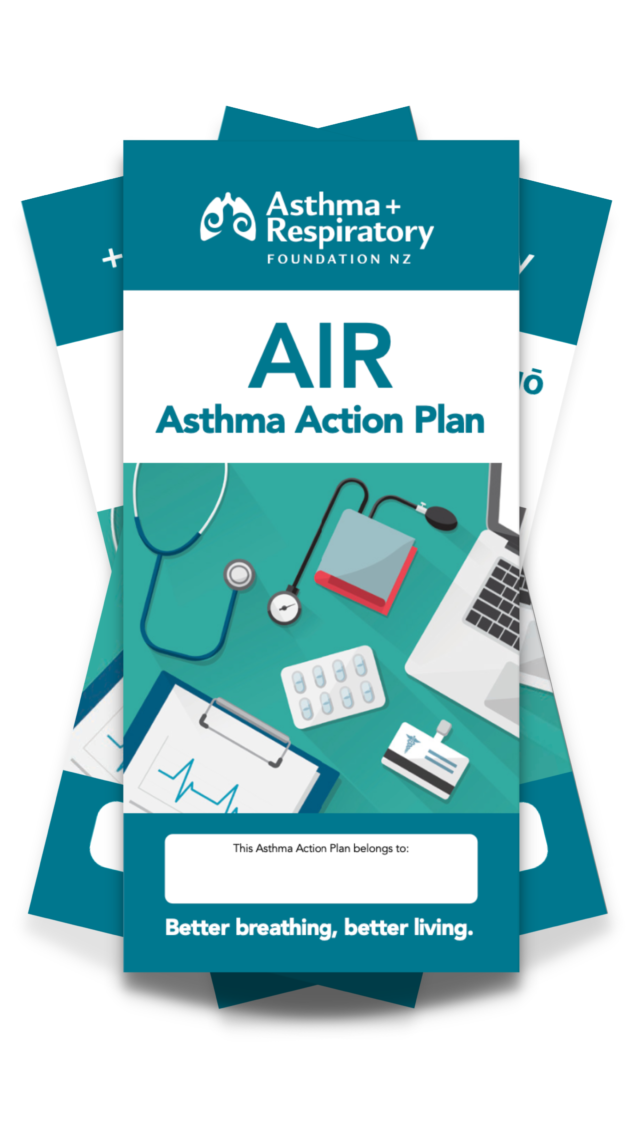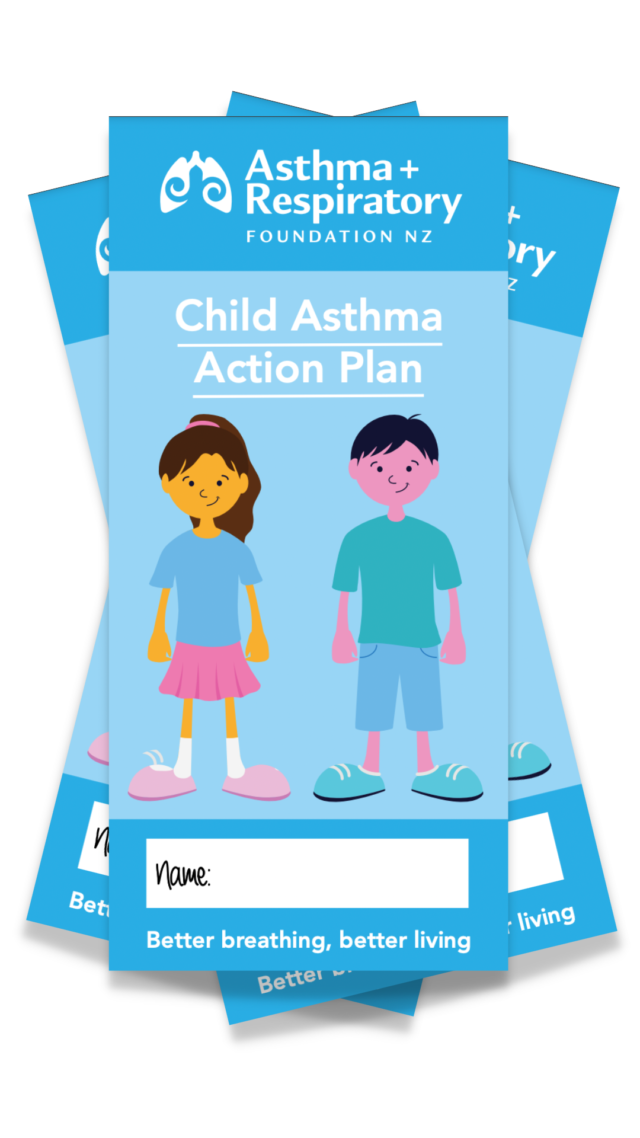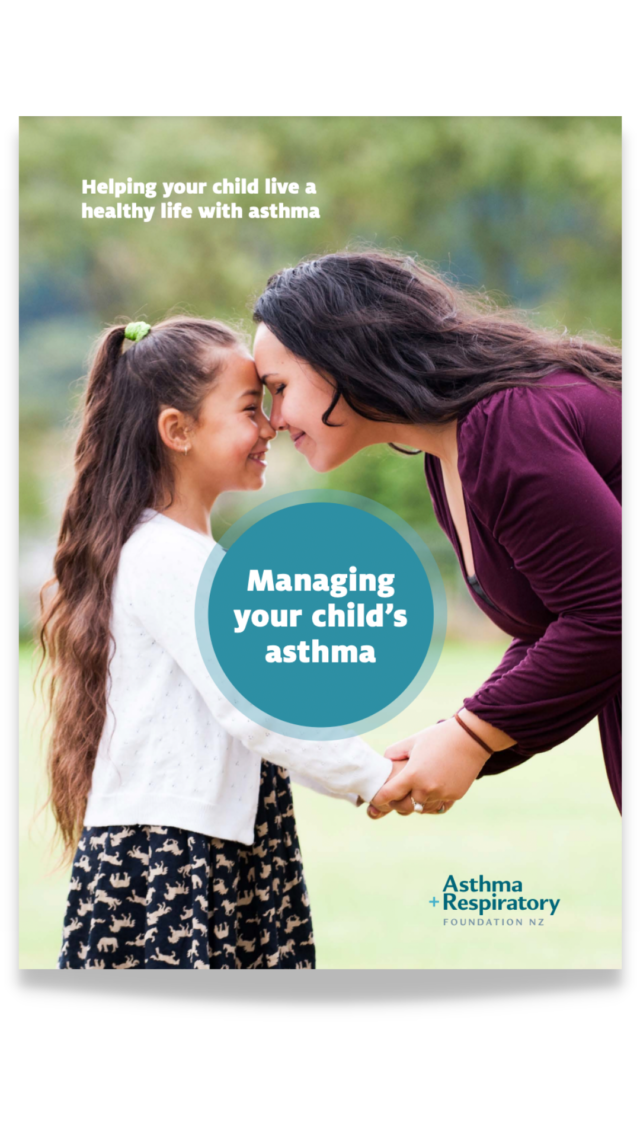For information on managing your child’s asthma, read here.
Is your asthma under control? Take the Asthma Control Test here to find out.
Some people with asthma may think their asthma is better controlled than it really is. They get used to feeling the way they do and may put up with asthma symptoms and being limited in their daily activities.
Asthma symptom control is described as either good, partial or poor based on symptoms during the previous four weeks.
Good asthma control is:
Most people with asthma can lead a healthy, active life when they manage their condition well. Here are the key steps that you can follow to better manage asthma:
Everyone diagnosed with asthma should have a written asthma action plan. An asthma action plan is a personalised self-management plan, prepared by your healthcare practitioner, alongside you. It can be provided in print or digital form, and is designed to be easily shared with other family members, whānau, school, work, sports coaches and others.
Adolescents and adults will use one of three asthma action plans (AIR Asthma Action Plan, 3 Stage Asthma Action Plan, or the 4 Stage Asthma Action Plan), depending on the medicines prescribed for them by their healthcare practitioner.
An asthma action plan contains:
Research shows that people who use an asthma action plan have better control over their asthma. Having an asthma action plan reduces emergency visits to primary care or After Hours surgeries, reduces hospital admissions, and reduces reliever medication use.
Asthma action plans should be reviewed and updated at least once a year, or if there is a change to your medication.
It is important that you understand how your medicines or asthma inhalers work, and take them as prescribed. There are different devices to deliver your medicines. Read more about asthma medications here.

A peak flow meter measures how fast you can blow air out of your lungs. When your airways are fully open and you are well, you will get a high reading. When your airways start to get narrow and you are experiencing asthma symptoms, the reading becomes lower.
You can use these readings, together with your symptoms, to decide when you need to take action and change your treatment by following your asthma action plan. You can record these readings in a Peak Flow and Symptom Diary.
What is a peak flow meter?
A peak flow meter is a small plastic device with a measuring gauge down the side. The levels on the peak flow meter measure how much air you can breathe out in one fast breath, which then indicates how well your lungs are functioning.
Why do we use peak flow readings?
Peak flow meters are used to determine your ‘best peak flow’, which is your benchmark reading of how strong your lungs are when you are healthy and without symptoms. This measurement is used as part of your asthma action plan. If your peak flow reading starts to drop below your ‘best peak flow’ reading and you have asthma symptoms (wheeze, tight chest, a cough or feeling breathless), follow the advice on your personalised asthma action plan on how to step-up your medication and when to see your healthcare practitioner.
You can use a peak flow meter at home to:
How do I find my ‘best peak flow’?
To find your personal ‘best peak flow’ reading, take your peak flow every day, morning and night, before taking your asthma medicine, for one week, following the instructions below. Your asthma should be under control during this time.
Write down the number you get for each peak flow measurement . The highest peak flow reading you have during this week is your ‘personal best’.
It is important to remember that your ‘best peak flow’ reading can change over time. Ask your health professional when you should re-assess for a new personal best peak flow.
How to use your peak flow meter
If you have a Peak Flow and Symptom Diary, record your peak flow readings in the diary and on the graph – this will quickly pick up any changes or trends in your asthma control. Keeping a Peak Flow and Symptom Diary is a useful monitoring tool if your asthma medication has been changed, if you are currently unwell (e.g. have a cold or the flu), or you have recently experienced an asthma flare-up and you are monitoring your asthma control.
It is important to build a partnership with your healthcare practitioner, asthma educator and pharmacist. Following their advice should help you reduce the number of symptoms you experience. See your healthcare practitioner if your asthma is interfering with your daily activities or worrying you in any other way.

Being physically active is especially important for people with asthma, although some people are afraid it might cause an asthma flare-up. However, by following some simple tips, most people can exercise free of asthma symptoms. Physical activity improves lung capacity, blood flow, and is calming, fulfilling and fun.
People who are active usually find they have less asthma and cope better when they do have it. Te Whatu Ora Health New Zealand recommends that adults aim to do at least two-and-a-half (2½) hours of moderate physical activity or one-and-a quarter (1¼) hours of vigorous physical activity spread throughout the week - a small price to pay for staying well! Te Whatu Ora also provide activity guidelines for children under five years of age, children and young people (5 to 17 years), and older people (aged 65 years and over).
Many people get more wheezy with exercise because their asthma is not as well-controlled as it could be. See your healthcare practitioner to review your medicines and ask for an asthma action plan. Activities involving a lot of stopping and starting or that take place in a warm moist environment are less likely to trigger asthma. Swimming, walking, tramping, tennis, yoga, martial arts, tai chi, aerobics or team sports, are all good options. Use your reliever inhaler as instructed, just before you exercise.

Cigarette smoke contains 7,000 chemicals, hundreds of which are known to be harmful. The lungs are particularly damaged by inhaling cigarette smoke.
Why is smoking especially harmful to people with asthma?
Make it a rule that your home is smokefree at all times for everyone. Let other people know, asking them to go outside to smoke or vape.
For help with quitting, visit Quitline (0800 778 778), one of our asthma partners, your pharmacy, the National Heart Foundation or the Cancer Society.
The rapid rise in the use of e-cigarettes (vaping) is a growing concern. Many vapes contain nicotine, including products that claim to be nicotine-free. Vapes contain additives and flavours which have been approved for use in food products, but haven’t been tested as to whether they are safe when inhaled into the lungs.
While we don’t know the exact cause of asthma, we do know that asthma is believed to be caused by a combination of genetic and environmental factors. It is too early to tell how (or if) vaping plays a role in the development of asthma. However, research has so far found that vaping and second-hand vaping can irritate the lungs, cause coughing and worsen symptoms of respiratory conditions like asthma.
Asthma and periods
Some women find that their asthma is worse around the time they first start menstruating, although this usually settles down as their menstrual cycle becomes established. However, women with severe asthma may find that their symptoms are worse just before or during menstruation. Keeping a Peak Flow and Symptom Diary will help you clarify whether this is an issue for you. If you don’t already have one, talk to your healthcare practitioner about an asthma action plan, and whether it could include taking extra treatment during the week before your period.
Some over the counter medications used for period pain (aspirin and other non-steroid anti-inflammatory tablets, e.g. ibuprofen (Nurofen®), mefenamic acid (Ponstan®), naproxen (Naprogesic®) and diclofenac (Voltaren Rapid®)) can induce an asthma attack in some people. Paracetemol (Panadol®) is usually a safe pain reliever. The oral contraceptive pill has no effect on asthma.
Asthma during pregnancy
The most important advice for pregnant women is don’t smoke, and this is even more important if there is a family history of asthma. Around one third of women find their asthma improves in pregnancy, one third find it stays the same and one third find their asthma gets worse.
If your asthma gets worse, you may need to increase your medication and revise your asthma action plan with your healthcare practitioner. You will also need to discuss your plans for the delivery of your baby. If your asthma is severe, the delivery may be best handled in a hospital environment in order to access appropriate support if required. During labour and delivery you have the same choice of pain medication as any woman. If you do have an asthma attack or flare-up during pregnancy, treat it as you would normally.
Inhaled asthma treatment will not harm your baby during pregnancy. Your baby will do best if you are breathing well, so it is important that your asthma is well-controlled.
Having poorly controlled asthma, or having an asthma flare-up during pregnancy, increases the risk of pregnancy complications such as low birth weight or pre-term birth. Ask your healthcare practitioner or lead maternity carer about having more frequent check-ups for your asthma if you are experiencing any worsening asthma symptoms.
Breastfeeding
Inhaled asthma medications are not found in breast milk. If you have to use corticosteroid tablets, the small quantities found in the breast milk will not have any harmful effect on your baby.

This self-management action plan for adolescents and adults (aged 12 years and over) is to be completed by healthcare practitioners, together with their patients. Available in English, te reo Māori, Samoan, Tongan and Simplified Chinese

This asthma action plan is for healthcare practitioners to complete alongside parents/caregivers and their child. Available in English, te reo Māori, Samoan and Tongan

The “Managing your child’s asthma” resource teaches parents/whānau about asthma including how to help prevent an asthma attack. Also available in English, te reo Māori, and Samoan.